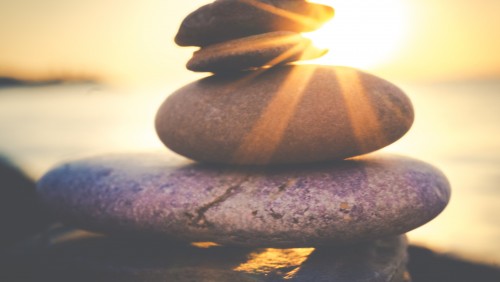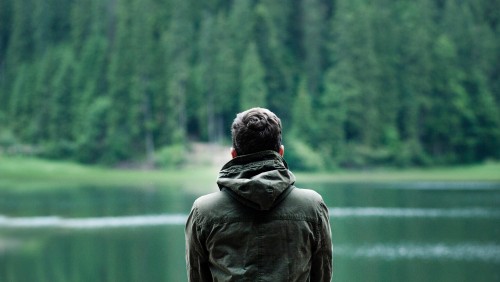It had been three years since I returned to a silent meditation retreat, thanks to COVID. Yes, I meditated quite regularly over these years, but I have come to view my practice as mental flossing, whereas a visit to a silent meditation retreat for a few days is a trip to the dentist for a real cleaning.
AUTOPILOT
To understand how much mental tartar had built up since the pandemic, consider my behavior on the morning before I finally hit the road for Barre, MA (home of the Insight Meditation Society). It was the top of a Thursday looking down the barrel of an absolute wall of clients, meetings, and evaluations, where I knew “lunch” was a euphemism for whatever lukewarm leftover found its way down my gullet during a zoom call. I had gotten up early, exercised, listened to some horrible news update, showered, put on my competent-person costume, and started on breakfast, all without ever really stopping to observe my experience. I was on autopilot, and totally confident in the autopilot’s skills. Somewhere between frying an egg and trying to decipher what my wife was talking about (I think she has a friend who bought a house?), I tried to put my lunch together. When I returned to the pan, the eggs were crying to be flipped, dark brown beads of overheated cooking spray crowding its edges. I grabbed a spatula and flipped it over while murmuring the obligatory “new house, huh?” and one of the anxious yolks crashed into the side of the pan, dribbling goo down along the side and into the burner.
Time froze. My wife appeared to freeze too. Somehow, the wisest move I could think of was to take the pan, egg and all, and literally throw it in the direction of the sink. It helps to picture the following in movie-style slo-motion. The pan turns gracefully in open space, relieving itself of both the broken egg and its yet unbroken partner. The egg and its mangled conjoined twin pirouette upward, beyond the pan’s destination and above the sink, colliding with the hand and dish soap dispensers. The survivor egg and the remains of its wounded brother explode across the dispensers, painting them completely in sticky, depressing, yellowish ooze. More silence. What to do? What to do? How to solve this problem of soiled soap dispensers and ruined breakfast with only a few minutes to spare before I must head off to work? I got it! I will walk five paces to the dining area and I will kick that chair. The one looking at me funny. Yep, problem solved.
OK, so maybe confidence in my autopilot is unjustified. I did, for the record, apologize to my wife for my ridiculous display. The problem above, as I see it, represents two deficits (barring major flaws in my overall character). First, I was trying to do multiple things at the same time and not paying meaningful attention to any of them. Second, my thoughts and emotions ambushed me. I simply did not see them coming because they snuck up on me too fast. The lesson I always learn on meditation retreats (and gradually forget back in the real world) is that I actually have some agency over my attention and how I use it. If I use it skillfully, really paying attention to the present moment, I can see unwanted thoughts as they arise and intense emotions gradually approaching. I can avert them by stepping aside, challenge them by getting in the way, or even welcome them as temporary visitors from beyond. But without the gift of attention, I’m just standing in the train tracks, staring at my phone, no idea of what’s about to hit me.
DON’T JUST DO SOMETHING, SIT THERE
For those who may not have read about my earlier experiences on retreat (here and here), a quick refresher. A meditation retreat (at least in the tradition of which I am familiar) involves several days of meditating in noble silence with a group of other interested meditators under the guidance of one or a small number of teachers. Noble silence means you don’t talk unless absolutely necessary or invited to speak as part of the teacher’s q&a segment. It also means you don’t take in noise wherever possible, including music, the sounds of your television, the incessant dinging of your email and texts, or even mental noise through reading and writing. The teachers’ dharma talks are a notable exception. The central idea is you are allowing consciousness to be as clean a slate as possible so you can really see what arises in there when you’re not told stories from the outside world so much. So what do you do with your time? Well, mostly you alternate between sitting meditation (in 30-45 minute sessions), walking meditation (of the same length), eating, sleeping, and a few simple assigned chores. I got to fill the tea canisters this time around and it was immensely satisfying.
As with my other experiences on retreat, my mind and body ran a somewhat predictable course. The entire first day, I struggled to stay awake during sitting meditation. More annoying than simply catching myself snoring in a room full of strangers was my tendency to start dreaming without knowing I was asleep. When we’re conditioned toward constant stimulation, sudden denial of stimulation and excess rest can be very disorienting to the brain. The other misery-inducing phenomenon (which happens every time for me) is the sudden recognition that my phone and the demonic apps that live in it have been rescuing me from fear, shame, doubt, sadness, regret, and every other emotion I find the least bit off-putting. What if I can’t pull off this project at work and it reveals I’m a generally inadequate excuse for a human being? No worries, here’s something on Twitter that makes me mad, just in time.
CH-CH-CH-CHANGES
This “wisdom of no escape” (to borrow a phrase from Pema Chodron) may not sound like much fun, but it is surprisingly useful. In the absence of an easy exit from these unwanted thoughts and emotions, there isn’t much to do besides watch them come and go. Or, more importantly, to watch them change and to realize that they follow the same rule as everything else. Everything changes. I notice an unwanted emotion, and that’s a change from before it was noticed. It gets worse, and that’s a change too. It gets replaced with another, and yet another change. It even goes away sometimes.
On this retreat, physical pain was a recurring theme. There is no exact right way to sit when meditating, but there are a variety of postures you can try. For me, one makes my back hurt, another makes my knees hurt, and a third makes my back, knees, and hips hurt. I decided this time to explore the different postures and it was worth it. At first, there was a lot of internal complaining and wishing that the pain wasn’t there. If only I felt great, I would feel great!! But over time, I started to apply the same mentality to pain that I had learned to apply to my unwanted thoughts and feelings. I stopped focusing on whether or not it was there and focused instead on how it would change. I even added a kind of cadence to my internal voice that would get excited by each change. Oh, check that out, the knee pain went from stabby to throbby! and Hey, look at that, a new aching in my scapula!
A LONGER RUNWAY
Somewhere towards the end of the second full day, I started to really embody something the teachers had been saying. We get so agitated and focused on the next thing as if that alters the course of time, but there must be another way. We get mad at the car in front of us as if that gets us to work faster, but there must be another way. We cruelly beat ourselves up over the past as if this somehow rewrites history, but there must be another way. This isn’t code for “everything is your fault if you’re paying close enough attention.” It’s just a call for effectiveness. There are things that occur in life that we cannot change except in how we react and respond to them and there are no things we can change without first accepting them (to borrow from the core tenets of DBT).
Well, by the end of the retreat, I once again had a taste of what life could be like. Of course, like everything else, it will change, but perhaps I will benefit from its recent memory. It is difficult to put into words, but the experience is something like being a witness to thoughts arriving as opposed to becoming aware only after you have reacted to a thought. For anyone reading this with OCD, you can imagine how useful that would be. I made a commitment to prioritize meditation in my daily life even more. I stopped bringing my phone with me to the couch to watch tv with my family. I deleted my fake twitter account (so long, BeetsbyDre), and I’ll do what I can to continue to foster this energy. I know it will not last. I am ok with that. I just hope that when I do start to slip back into my old, distractable, judgmental conditioning, I notice the change. Maybe next time too many of my buttons are pushed, I will take a breath, smile, and simply picture eggs in flight.
Meet the Expert
-

Jon Hershfield, MFT
Director, The Center for OCD and AnxietySpecialties:Anxiety Disorders, Cognitive Behavioral Therapy, Obsessive-Compulsive Disorder (OCD)
-
My Takeaways from Days on Silent Meditation: Part Two
Mental HealthPublished:Jon Hershfield, MFT shares his firsthand experience with mindfulness and how he uses it for OCD.
-
My Takeaways from Days of Silent Meditation: Part One
Mental HealthPublished:Mindfulness, or learning to view thoughts and feelings as observable phenomena instead of “the truth” or “threats,” has been instrumental in my journey through OCD…

